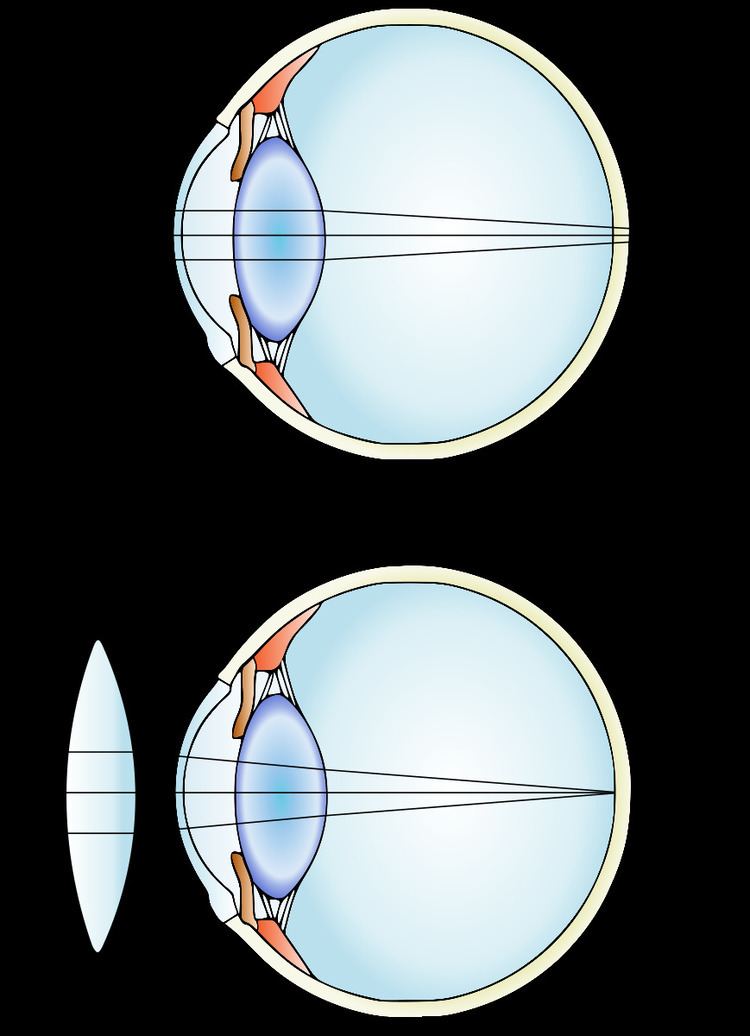Specialty Ophthalmology ICD-9-CM 367.0 MedlinePlus 001020 | ICD-10 H52.0 DiseasesDB 29644 | |
 | ||
Synonyms hypermetropia, hyperopia, longsightedness | ||
Far-sightedness, also known as long-sightedness and hyperopia, is a condition of the eye in which light is focused behind, instead of on, the retina. This causes close objects to be blurry, while far objects may appear normal. As the condition worsens, objects at all distances may be blurred. Other symptoms may include headaches and eye strain. People with hyperopia can also experience accommodative dysfunction, binocular dysfunction, amblyopia, and strabismus,
Contents
The cause is an imperfection in the eye: often when the eyeball is too short, or the lens cannot become round enough. It is a type of refractive error.
Correction is usually achieved by the use of convex corrective lenses. For near objects, the eye has to accommodate even more. Depending on the degree of hyperopia and the age of the person, which directly relates to the eye's accommodative ability, the symptoms can be different.
Far-sightedness primarily affects young children, with rates of 8% at 6 years and 1% at 15 years.
Signs and symptoms
The signs and symptoms of far-sightedness are blurry vision, headaches, and eye strain. The common symptom is eye strain. Difficulty seeing with both eyes (binocular vision) may occur, as well as difficulty with depth perception.
Causes
As hyperopia is the result of the visual image being focused behind the retina, it has two main causes:
Far-sightedness is often present from birth, but children have a very flexible eye lens, which helps make up for the problem. In rare instances hyperopia can be due to diabetes, and problems with the blood vessels in the retina.
Diagnosis
A diagnosis of far-sightedness can be made via a slit-lamp test which examines the cornea, conjunctiva, and iris.
In severe cases of hyperopia from birth, the brain has difficulty in merging the images that each individual eye sees. This is because the images the brain receives from each eye are always blurred. A child with severe hyperopia can never see objects in detail. If the brain never learns to see objects in detail, then there is a high chance of one eye becoming dominant. The result is that the brain will block the impulses of the non-dominant eye. In contrast, the child with myopia can see objects close to the eye in detail and does learn at an early age to see detail in objects.
Classification
Hyperopia is typically classified according to clinical appearance, its severity, or how it relates to the eye's accommodative status.
Other common types of refractive errors are near-sightedness, astigmatism, and presbyopia.
Treatment
Treatment of far-sightedness includes the use of contact lenses and eyeglasses. Other treatments are:
Complications
Far-sightedness can have rare complications such as strabismus and amblyopia. At a young age, severe far-sightedness can cause the child to have double vision as a result of "over-focusing".
